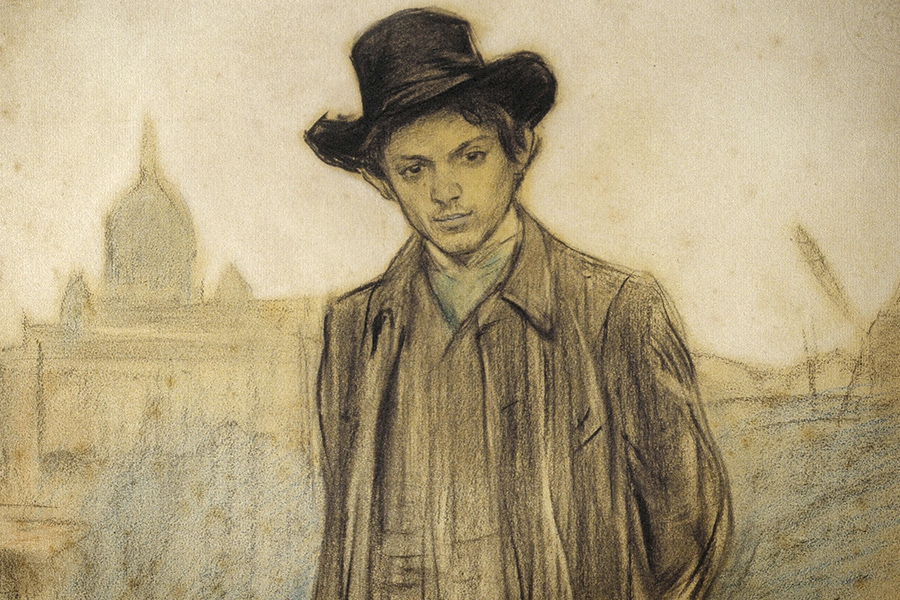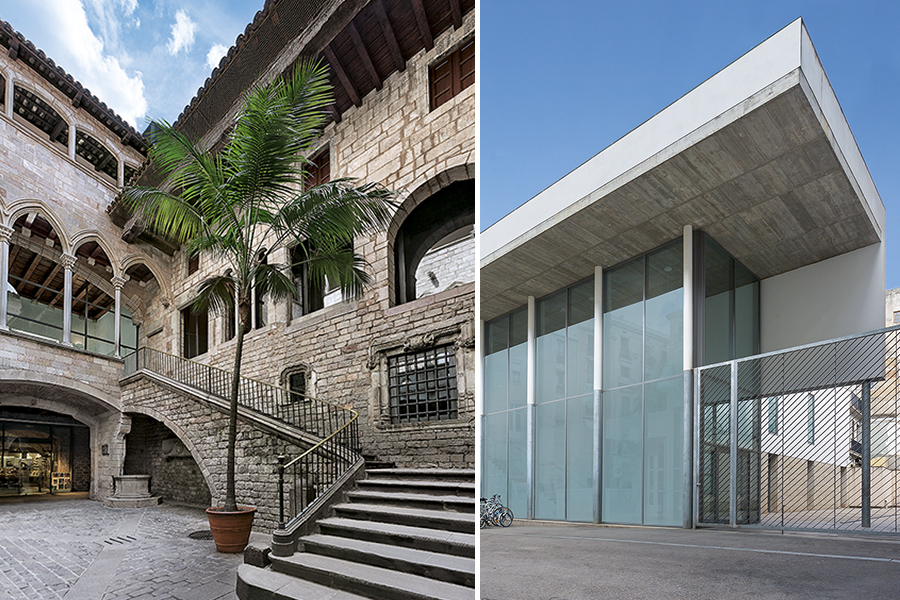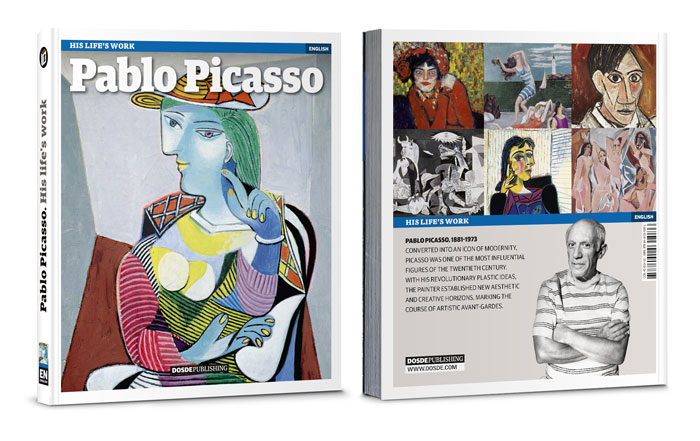The life of Picasso
Born in Malaga on the 25th of October 1881, Pablo Ruiz Picasso is considered to be the most revolutionary and versatile artist of the twentieth century, as well as one of the greatest exponents of the artistic vanguards. Thanks to his unlimited capacity for creativity, he was able to overcome all the cultural conventions of the time and determine the evolution of the Arts participating in the creation of Cubism, the movement where he reached full maturity as a painter and artist.
Picasso died at the age of 91 in Mougins, France, on the 8th of April 1973, leaving behind an unmatched legacy.
The formative years
Art was present in Pablo Picasso’s life since childhood. His father, José Ruiz Blasco, was a teacher of Fine Arts and a highly regarded painter in Malaga, specialised in depictions of birds and still life. Although his technical skills were limited, he could immediately recognise the innate talent of his son, who from his first forays into drawing and painting showed a mastery of the medium.
Don José wanted the young Pablo to utilise his skills with the objective that a good, professional future be guaranteed, so he took it upon himself to provide his son with the necessary economic support to further his artistic studies.
Classical ideals of order, proportion and beauty were the basis of the educational programmes of the time and inevitably determined Picasso’s style in his early years. Consequently, the works produced during that period barely deviated from Academicism, but nonetheless managed to reflect the artist’s amazing ability to assimilate quickly and naturally all the knowledge and skills his teachers passed on to him.
Picasso’s early experiments
Thanks to his innate ability and the sound academic training he received during adolescence, Pablo Picasso was able to rapidly incorporate a wide range of plastic resources into his work. Early in his career, following his immersion in the bohemian scene in the cities of Barcelona and Paris, the painter absorbed elements typical of Catalan Modernism (Modernisme) and Impressionism, whose influence helped define his own universe that materialised in the Blue and Rose periods.
His desire to explore all the different possibilities of painting resulted in Cubism, the style with which the artist from Malaga finished his youthful experiments and thus confirmed his intellectual maturity.
Picasso and Cubism
Since the Renaissance, European painters had used perspective to represent three-dimensional space on the flat surface of the canvas. From the late nineteenth century, coinciding with an age of scientific and social progress, diverse artists began to question the obsession for reproducing reality in an illusory way and started to defend, by means of their works, a more subjective vision of the world.
This interest in searching for alternatives to traditional optical effects was also shared by Picasso, who played a leading role in the definitive rupture with Renaissance tradition after laying the foundations of Cubism, a style that allowed capture various points of view simultaneously.
The catalysts of other avant-garde movements such as Futurism and Constructivism, the experiments of the painter, who continued to use cubist solutions throughout his career, sparked a new era in the history of art, defining the aesthetic attitudes of the twentieth century.
From Classicism to Picasso style
After the First World War, in European society there was the necessity to recuperate and reestablish the order that had been lost during the horrific war years. Within this context, there was also a rethinking of the concepts developed by the avant-garde movements, with the result that the pursuit of innovation at any cost ceased to be the driving force of art.
Pablo Picasso was not oblivious to this trend to returning to solid and enduring values, and during the initial post-war period alternated his incursions into Cubism with works that were dominated by classical forms.
Subsequently, the painter, who at that time was enjoying international recognition, incorporated in his pictorial production elements typical of Surrealism and Expressionism, two artistic genres that emerged with force in the 1920’s and 1930’s, until forming a unique style free from any form of orthodoxy, distinguished by the use of recurring iconography and the exploration of the perception of reality.
The mature Picasso
The final years of Pablo Picasso were marked by frenetic activity. Eulogised as a legend in the world of painting by the media, who were often more interested in his private life than actually analysing his new artistic direction, the painter seemed very keen to prove to himself that he still maintained the instinct and freshness of his youth, in such a way that he threw himself into what would become one of the most productive periods of his entire career.
Freed from any type of stylistic constraint, Picasso was still capable of working simultaneously on various works even though he was now much older. This creative urge led him to experiment with all sorts of techniques that he had within his reach so he could carry out his ideas as rapidly as possible, which included putting one-off compositions to one side in order to give priority to series based on just one sole concept, a tool of artistic expression that Picasso employed up to his very last days.
The most complete visual book on Picasso’s work
Picasso was one of the most versatile painters and creators of the 20th century. His creative ability surpassed the limits of his time and placed him at the forefront of the avant-gardes.
This book closely explores the works that Picasso carried out during his life, explaining each creative stage and showing his most important works, from his youth to his maturity as an artist.







